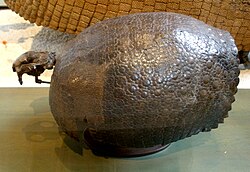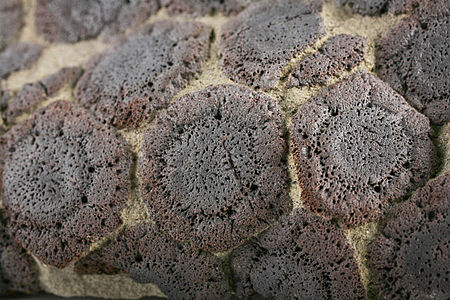Propalaehoplophorus
| Propalaehoplophorus | |
|---|---|

| |
| Propalaeohoplophorus minor | |
| Scientific classification | |
| Kingdom: | |
| Phylum: | |
| Class: | |
| Superorder: | |
| Order: | |
| Family: | |
| Subfamily: | |
| Genus: | †Propalaehoplophorus Ameghino 1887
|
| Species | |
| |
| Synonyms | |
| |
Propalaehoplophorus, also written as Propalaeohoplophorus, is an extinct genus of glyptodont, which lived in South America during the Early Miocene epoch.[1]
Distribution
Fossils of Propalaehoplophorus have been found in the Santa Cruz Formation of Argentina, the Honda Group and Nazareno Formation of Bolivia and the Río Frías Formation of Chile.[2]
Gallery
-
Restorations of Hapalops longiceps and Propalaeohoplophorus australis
-
Detail of a P. australis scute, early Miocene, in the permanent collection of The Children’s Museum of Indianapolis
References
Wikimedia Commons has media related to Propalaeohoplophorus.
- ^ Vizcaíno, S. F.; Blanco, R. E.; Bender, J. B. N.; Milne, N. (2011). "Proportions and function of the limbs of glyptodonts". Lethaia. 44: 93. doi:10.1111/j.1502-3931.2010.00228.x.
- ^ Propalaehoplophorus at Fossilworks.org


